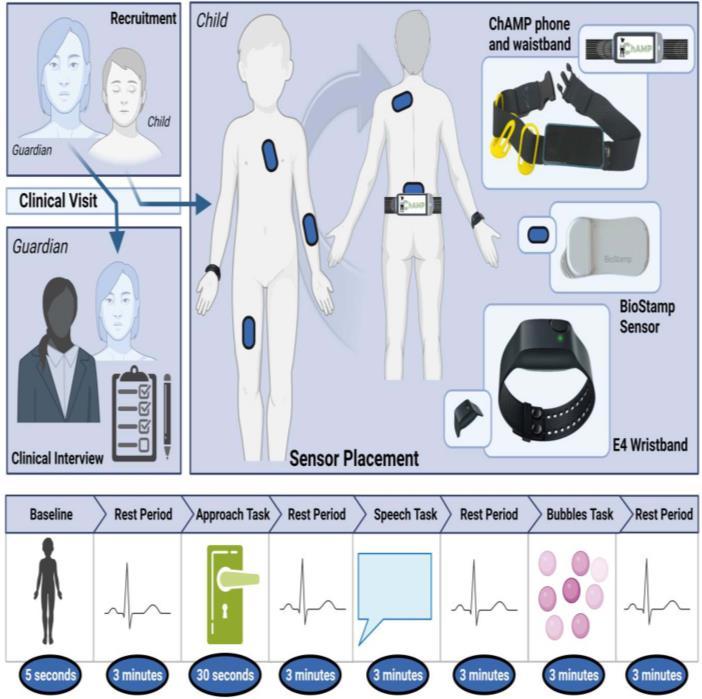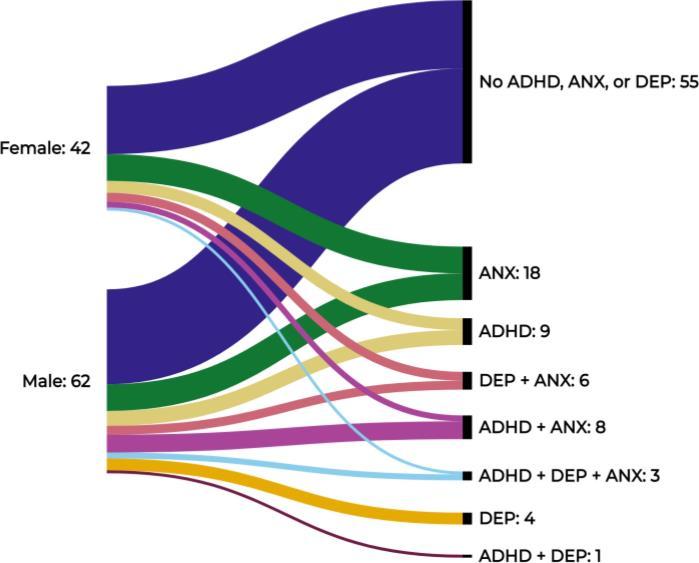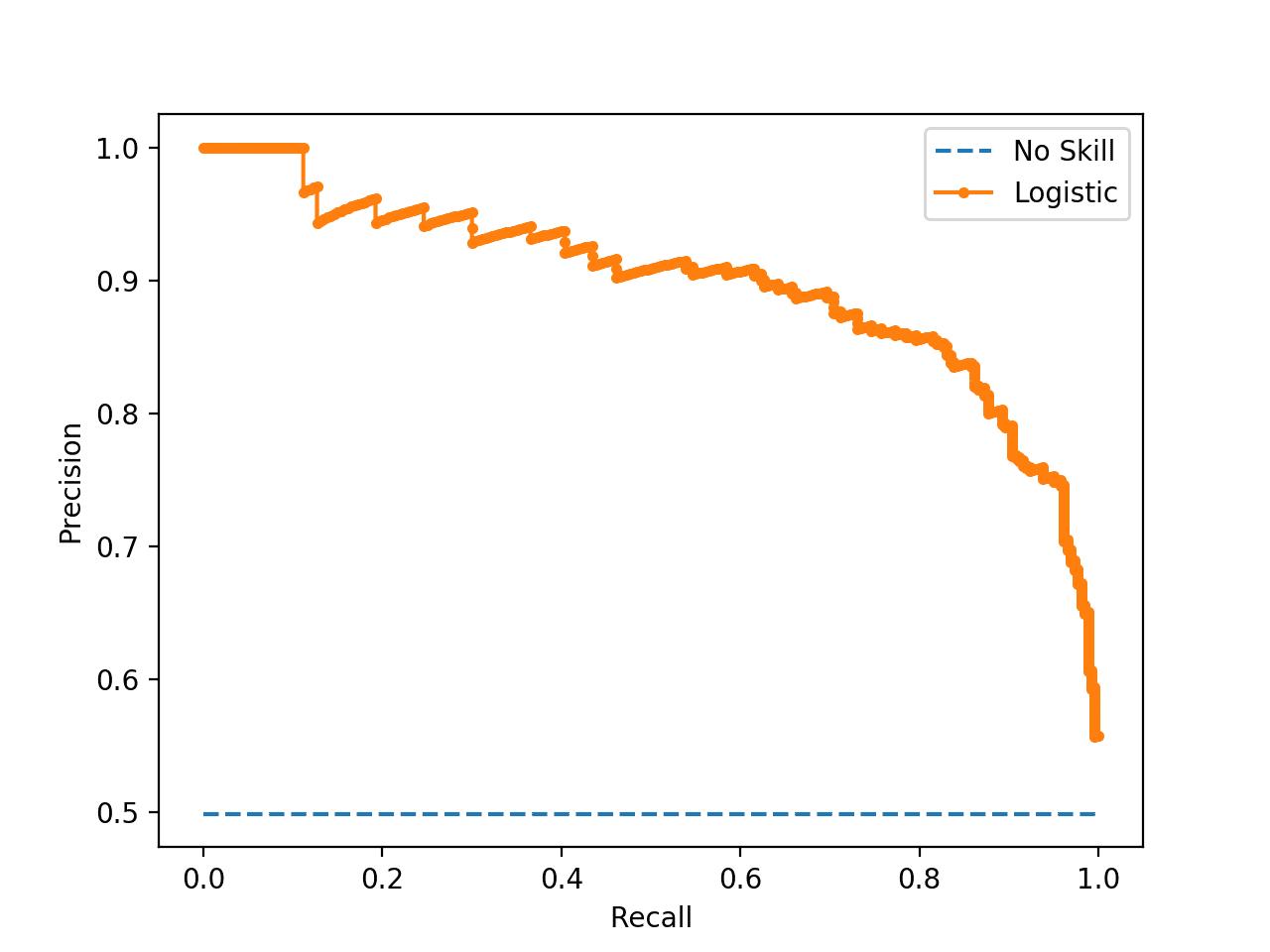
International Research Journal of Engineering and Technology (IRJET) e-ISSN: 2395-0056
Volume: 12 Issue: 01 | Jan 2025 www.irjet.net p-ISSN: 2395-0072


International Research Journal of Engineering and Technology (IRJET) e-ISSN: 2395-0056
Volume: 12 Issue: 01 | Jan 2025 www.irjet.net p-ISSN: 2395-0072
Balaram Puli1 , Pandian Sundaramoorthy2 , Rajesh Daruvuri 3
1Senior SRE and AI/Big Data Specialist, Engineering and Data Science, Everest Computers Inc. 875 Old Roswell Road Suite, E-400, Roswell, GA 30076, USA
2Application Developer, EL CIC-1W-AMI, IBM, , 6303 Barfield Rd NE Sandy Springs, GA, 30328 USA 3student, university of Cumberland, , 1105 peachtree st atlanta GA, 30309 USA
Abstract - Child and youth mental health especially underappreciatedhasemergedasanimportantpublichealth issue, untreated it results in cognitive and emotional learningcomplications.Adiagnosisofthesedisordersisstill challenging since children have poor self-observable and reporting skills, and caregivers may exaggerate or underestimatetheirchildren’ssymptoms.Newerobjective physiologicalandbehaviouralassessmenttoolsshowsome potential, but the majority include costly specialised equipmentthatlimitstheapplicationofitsusage. Childhood AssessmentandManagementofdigitalPhenotypes,whichis asingle,all-encompassingsolutionthatisinexpensiveand adoptsmobiletechnologytofacilitatepassivedatacapturing. It collects movement and audio data from children undertaking several mood-chasing activities, as an opensourceplatformanalysesthisdatatodistilrelevantdigital biomarkers that reflect emotional and behavioural health status. In total, we experimented with adolescents in 120 children aged 4–10 years with and without diagnosed mentaldisorders.Usingthesedata,weobtainedanessential improvement in diagnostic accuracy by applying machine learningalgorithmsthatrecognizeddisorderswithbalanced accuracy of 88–91 % that surpass the ranges typical for diagnoses obtained using the conventional diagnostic techniques (65–78% of parent-report measures’ balanced accuracy).Thecellimportancesthatledtothefeaturesthat helped in arriving at the predictions regarding the model wereanalysedusingShapleyAdditiveExplanations,whereit was shown the more micro aspects of behaviour and physiologicalchangesthatwerecentraltodiagnosis.These resultsshowthepossibilitiesoftheChAMPSystemasacost effective,non-invasivemethodthatcanaddmoreaccurate andobjectiveevaluationofthechild’smentalconditionand potentially increase the efficiency of early intervention in childrenatriskfordevelopingmentaldisorders.
Keywords: Children’s psychiatric disorders, digital phenotype, artificial intelligence, digital signatures, paediatric screening, behaviour tracking, machine learning-based algorithms, mood-provoking studies, early detection, m-Health, clinical decision support, pattern recognition, SHAPLEY ADDITIVE EXPLANATIONS, brief assessment of emotional states, tangible diagnostic capabilities, scalable solutions.
New pathologies also relate to the child’s mental health, whichhasbecomeamajorproblemoftheglobalhealthof the population. According to World Health Organization approximately20percentofchildrenintheagegroupof2to 17 years suffer from mental disorders for which early detection and response is of paramount importance. [1] Conditions like anxiety, depression, Attention Deficit Hyperactivity Disorder and Autism Spectrum Disorder do not have clear symptoms in childhood, therefore are not easilydiagnosed.[2]Theconsequenceofpoorlydiagnosed ornon-diagnosedmentaldisordersisseverewithnumerous negativeeffectsonthequalityof emotional[3] socialand academiclifeofanindividual.Consequently,improvementin thediagnosticcapacityanditsavailabilityhasemergedasan importantlineofresearchinchildhoodmentalhealth.
At present, evaluation and diagnosis of children’s mental ailmentsaredoneclinicallywherebyaclinicianadministers aquestionnaire,observesthechild’sbehaviouralconductas wellastakeawordfromtheparent/teacher.[4]Theabovementionedmethodsare,however,subjectiveinnature,may takeconsiderableamountoftimeandattimestheycontain biasorerrors.[5]Alsocompoundthischallengeisshortage of mental health professionals not to mention in the developingcountrieswheresuchhumanresourceisalmost an illusion. Secondly, utilization of these conventional modelsrestrictsthesupervisionofthedynamicprogressin the mental health of the child, thus may also delay the treatmentprocessincasewherethechild’ssymptomsmay changeorescalate.
There is a potential to reimagine childhood mental health assessment by incorporating recent advancements in artificial intelligence, and digital health technologies. Machinelearninganddeeplearninghaveemergedamong the most promising AI technologies for solving a vast numberofmedicalproblemsrangingfromimageanalysisto predictiveanalytics.[6]D-tracing,thecollectionofdatafrom smart, wearable and health apps allow the real time monitoring of a child’s mental state. Through massive amounts of behavioural, physiological and environmental data, AI- driven digital phenotyping offer an objective,

International Research Journal of Engineering and Technology (IRJET) e-ISSN: 2395-0056
Volume: 12 Issue: 01 | Jan 2025 www.irjet.net p-ISSN: 2395-0072
scalable and personal approach toward monitoring and diagnosingmentalhealthdisorders.
Digitalphenotypingmeansthatachild’sexclusivitycanbe extensively monitored in a non-intrusive manner or systematically, recording his activity, movement, and interactionwiththesurrounding,aswellasspeech,physical activity level, quality of sleep, and faces even. [7] The collecteddataisthenanalysedbyAIalgorithmsthatlookfor signs that indicate developing cases of mental health problems with fair precision. For example, men Creating TalkChangesinspeechmenSocialInteractionChangesor Sleep Disturbance Changes can be signs of emerging depressionandanxietyandthenspecificstepscanbetaken toaddress.
One major advantage of AI digital phenotyping is that the process of diagnosis can be customized to fit the patient. Normally, diagnosis in such matters is based on certain standardprotocolswhichmayfailtocapturespecificsigns or nuances. [8] On the other hand, AI models can be customizedaccordingtochildren’sregularitiesandactions thereby enhancing the tests’ accuracy and the proposed therapies’ quality. It instructs them from the child’s data; suchsystemscanthereforeprovidedevelopmentalsystem assessmentsthatareovertime,andthisisseentobelacking in other diagnostic techniques. [9] The advancement of lighterandportabledevicessuchasSmartphone,wearable devices,tele-medicinesoftwarecanlikelybringdiagnostics ofmentalhealthdisordertoagreatersectionofpopulation whocannotaffordtovisitapsychiatristinruralregions.[10] Appliedtohelpingindividuals,AIdiagnostictoolscanhelp parents,caregivers,andcliniciansgetregularfeedbackinthe appropriate action to take regarding the child’s learning conditionsandnecessaryneurologicaltreatmentplans.The abovetoolscanalsohelpimprovedatacollectingpartand speedituptoretrieveinformationfromavarietyofsources, whichinturnmakesiteasiertodevelopmorecredibleand balancedassessmentsthanwouldbepossibleifconducted throughin-personvisitsonly.
Thisresearchseekstoidentifyhowchildhoodmentalhealth canbediagnosedusingdigitalphenotypingthatissupported by AI with the main objective of increasing the early diagnosisandaccuracywhendiagnosingsomeofthehealth issues that affect children as well as the use of adapted treatmentplans.[11]Thereisaproposedapproachofusing supervised and unsupervised learning, deep learning and natural language processing The proposed system is designedtobeintelligentandcapabletodiscoverassociative patterns of behavioural, physiological and environmental information that points to mental health in children. [12] Thepurposeoftheprojectistodevelopthediagnostictool whichwouldhaveadvantagesofbeingaccurate,applicable tobroadpopulationandeasilyusedinavarietyofcontexts so that children at risk for developing mental health
disorderswouldreceivetimelytreatmentandsupportthey need.
The awareness of childhood mental health disorders has seen an upsurp from society this has brought a need for development of methods of diagnosis and supervision. Classically, the child’s mental state assessment relies on parent’sandclinician’sobservationsandimpressionswhich canbesubjective,misleadingorconflicting.McGinnisetal., 2022 stated that though parents are commonly the respondentswhenitcomestoachild’smentalhealth,their reportsmaynotnecessarilycapturethechild’sneeds.Such anapproachtomonitoringleadstoinaccuraciesinassessing symptoms to the point of systematic under- or overestimationofactualissueswhichcancreateproblems for diagnostics and treatment. [13] In addition, children themselves are generally not accurate informants when it comes to their mood and behaviour, making it difficult to assesssuchconditions.
Considering these issues, the trend emerges for adopting digitalphenotypingtoincreaseobjectivenessandaccuracy ofthementalstateassessment.Digitalphenotypingcanbe describedasamassinginformationfromsensorsthathave beenintegratedintodaily-lifedeviceslikemobilephonesor wearables to obtain instantaneous physiological and behavioraldatathatmightofferabetterpictureofachild’s mental health status, the study presented by Sousa et al. (2023)haveshownthatlevelofphysicalactivity,amountof sleep, heart rate, and other biomarkers can be collected through wearable devices to replace direct self-reports of mentalhealthstatus.Thesetechnologiescanenableconstant monitoring and report accurate data of a child free from typicalhumanerrorsindicatingtheiremotional/physical condition.
Machinelearningisalsousedinthesesystemssincesomuch dataiscapturedbythesesensor-basedsystems.Loftnesset al.(2023)foundthatsupervisedandunsupervisedmachine learningalgorithmshavethepotentialofgeneratingdigital phenotypes of ECMH. They employed sensor data in connection with clinical data to train models capable of estimatingmentalhealthfuturestatus.Theimplementation of machine learning helps to improve the accuracy of diagnosisbecauseitformspreviouslyunnoticedpatternsin thedatawhichclinicalworkerscannotnotice.Consequently, these models can be further developed to fit Children’s learning development, reaching for much more exact and personalizedmethods.
Also, when using mobile applications, the integration of moodinductiontaskswasfoundeffectiveasaprocedurefor obtainingrichdatainareal-lifeenvironment.Forexample, theChAMPsystemusesmobiledevicestoobtainmovement aswellasaudioinformationduringMINT,whichpaintsthe

International Research Journal of Engineering and Technology (IRJET) e-ISSN: 2395-0056
Volume: 12 Issue: 01 | Jan 2025 www.irjet.net p-ISSN: 2395-0072
picture of every emotional and behavioral response of a child (ChAMP homepage, 2022). As with mood induction taskswhichareprincipallyintendedtocausecertaintypesof feeling,aresearchercanthenseehowthechildrenrespond inthisway,whichprovidesabetterlookattheiremotional self-regulationpatterns.Thisapproachhastheadvantageof reducedcapabilityofperforminglargenumbersofchildren’s screeninganddoesn’trequireclinicalsettingsorequipment. The role of mobile applications and wearable devices extends beyond assessment to the treatment and management of mental health disorders. Mobile-based biofeedbacksystems,suchasthosestudiedbyMcGinniset al. (2021), use real-time physiological data to guide individualsthroughrelaxationtechniquesandothercoping strategies. These systems can be particularly beneficial in managinganxiety,depression,andpanicdisorders,asthey offer immediate interventions that can be employed now symptoms arise. The ability to track heart rate, breathing patterns, and other vital signs enables these systems to providepersonalized,data-driventherapeuticinterventions that can be administered remotely, making them ideal for children who may not have easy access to traditional therapeuticsettings.
Moreover,theutilisationofthesedigitalhealthtechnologies through the Research Domain Criteria (RDoC) from the National Institute of Mental Health (NIMH, 2024) may significantlyimprovethescientific validityandreal-world applicabilityofmentalhealthevaluationprocedures.RDoC basically adopts the concept of dimensional approach as opposed to categorical one, in diagnosing mental health disorders. [14] Through the integration of sensor informationwiththedimensionalmodelofRDoC,thedigital phenotyping systems can enhance an assessment of children’smentalhealthwithmultiplespecificationsatthe neurocognitive, emotional, and social levels. [15] This integrationcouldmeanimproveddiagnosticoutcomesand improvedtreatmentplansforsuchchildrensincethecareto beofferedwillalsobeuniquetoeachchild.
TheapproachusedwhendesigningtheChAMP(Childhood AssessmentandManagementofDigitalPhenotypes)system is as follows: special attention is paid to the fact that the research is carried out only with genuine and reliable content,largevolumesofworkdonotaffectthequality.It involves the use of digital phenotyping together with machineslearningtoanalyzethementalstatusofchildrento identify these disorders. The next subsequent sections explain the detailed methodology of the study, from data collectiontosystemdeployment.
3.1. Data collection and preprocessing
ThefirststepindesigninganAI-baseddiagnosticsystemis DataCollection.Surveydataforthisresearchwascollected by use of an android based mobile application that was
developed.Itwasfurtherdesignedforcapturingmovement and audio data throughout the SI tasks that are highly structured,moodinduction. Thesetaskswereintended to capture children’s various joyful, frustrating or calm behavioralmanifestationstorecreateauthenticlifesettings andcircumstancesthatthechildislikelytoexperience.

Fig.1. Participating children and their primary caregiver participate
Themobileapplicationincorporatedtheapplicationsensors of the smartphone, including the accelerometer and the integratedmicrophone.Thetriaxialaccelerometercaptured the child’s gross motor activities and movements and the ambientspeechandothersoundswerecapturedusingthe microphone for further analysis. This enabled the researchers to obtain high-resolution behavioural and physiologicaldatawhichwereimportantinfurtheranalysis.
For example, ethical compliance was achieved by asking parents for consent for the child’s participation and by observing GDPR standards on data privacy. Fig.1 The targeted children were 120 of them, aged 4 to 10 years. Among these, 60 were diagnosed with a mental health disorderandtheother60werehealthychildrenwithoutany disorder,thusthecontrolgroup.
To ensure the data collected were suitable for analysis, severalpreprocessingstepswereperformed:
Noise Removal: Becauseit isevidentthattherawsensor datacontainhigh-frequencynoise,dataresamplingincluded theapplicationofaButterworthfilter.

International Research Journal of Engineering and Technology (IRJET) e-ISSN: 2395-0056
Volume: 12 Issue: 01 | Jan 2025 www.irjet.net p-ISSN: 2395-0072
Normalization: Measurements obtained from different sensorswerenormalizedusingmin-maxnormalizationso thatallfeaturesarenormalizedtothesamerangesuitable formachinelearningmodels.
Segmentation: To better analyze the features, the large formatted continuous data streams were divided into smalleruniformtimesegments.
Table.1 Preprocessing steps
Step Methodology Used Outcome
NoiseRemoval Butterworth filter Cleaned sensorsignals
Normalization Min-maxscaling Uniform data scale
Segmentation Fixed time windows(5sec) Datareadyfor feature extraction
InthesecondphaseoftheChAMPSystem,thegoalwasto identify discrete features within the data files that are meaningfultothediagnosingclinicianandcouldbeusedas countable endpoints for mental health conditions. Digital biomarkersarereal,quantitativeattributescalculatedfrom the physiological and behavioural data that play a critical role in diagnosing and characterizing mental health disorders.Thisphaseaimsatestimatingthesebiomarkers from data obtained from the child’s real-time interaction with the mobile application, movement and audio data essentially.
Movement Data: Dataonmovementswerecollectedbythe accelerometerandthegyroscopethatarecomponentsofthe smartphone. These sensors documented activity of the child’sphysicalmotionsduringanumberoftasks.Fromthis data, several features were extracted to facilitate the measurementofphysicalactivityandidentifypossiblelatent mentalhealthproblem.
Total Activity Count: Thisfeaturesymbolizesanaverageof thetotalnumberofactivitiesthatgoesonwithinitatagiven period.However,itisusedasameasurementforexercisein thechildandcanbeassociatedwithmentalstatusessuchas stressoranxiety.Abnormallevelsofanxietyordepression maycauseachildtoeitherhaveverylittleenergy,ortobe hyperactive.

Movement Variance: Thevariationofmovementishaving gainedmuchattentionregardingtheextentofchangesinthe physicalactivityofthechild.Thelargerthevalueofvariance morefluctuationisobservedinmovementpattern,whereas asmallvalueofvariancemeansthattheusers’behaviouris morepredictable.IncaseofachildwithADHD,anxietyor anyothermedicalcondition,movementvariancecouldshow thatthechildcannotsustainacertainbehaviourwhichmay beanindicationofstress.
Speed: Thesecondcomponentofmotorskillisspeedwhich isdefinedastherateofanobjectorachildmovingthrough timewithspecialreferencetothespeedatwhichthechild movesduringaparticularactivity.Fastermovementcould suggest anxiety or simply excitement while slower movementscouldsuggestboredorwithdrawalbehaviour.It couldbelinkedwithdifferentmoods,emotionalconditions, allowingevaluatingchild’semotionsduringtasks.
Audio Data: Tomovementsdataspeechdatawasaddedto assessspeakingpatterns,whichisalwaysanindicatorofa child’s emotional and psychological condition. Voice characteristicscanpointtowardssomelevelofupset,stress or even happiness and these are correlated with mental healthdisorders.
Pitch: Pitchstretchesfromhowhighorlowachild’svoice cango.Itcanbeanoutcomeofstressorexcitementorany otherstateofmind,itcanbeanything.Pitchisnormallyhigh whenapersonisstressedoranxiouswhileit’slowwhenhe or she is calm or sad. These movements entail changes in frequency and by capturing the pitch we shall be able to capturechangesinfeelingsevenwhentheaffectivestateis notdepictedbythemovements.
Loudness: Loudness quantifies changes in volume in a child’s speech as live speech. It serves to evaluate the

International Research Journal of Engineering and Technology (IRJET) e-ISSN: 2395-0056
Volume: 12 Issue: 01 | Jan 2025 www.irjet.net p-ISSN: 2395-0072
independenceofemotionalarousalordistress.Forinstance, whena patientspeaksloudly,theymaybeconveyingthat theyare excited,angryoragitated whilewhentheyspeak softly,theymaybedepressed,orwithdrawn,orjustrelaxed. Observing the decibel level can offer some important informationonachild’semotionalconditionmainlyduring stressfulactivities.
Speech Rate:Thespeedalsoisanotherproofofthestateof anindividual’spsychologicalcondition.Whenchildrenare stressed,anxiousorfearfultheirspeechrateishigherthan thatofchildrenwhoaremorerelaxed.Thiswillhelpinthe early diagnosis of a person’s state of mind and if he is anxious, agitated or have other mental problems through analyzingit’sthespeechrate.
Spectral Centroid: Relativepower,whichislikebrightness inimagery,isquantifiedbytheformofthespectralcentroid. SometimesahigherSCresultsignifiesapitchofthesound that is in the higher component register and can sound strained/ bright. In the case of speech this feature can be useful for evaluating emotional conditions, for in stress childrenthetemperconditionsofwhichproducethehigher tonewillproducethe‘brighter’sounds.Ontheotherhand, speech produced during a calm or a neutral emotional conditionmayhavelowerspectralcentroid.
The formula for Spectral Centroid is as follows:

Where:
Cs representsthespectralcentroid,
Fisthefrequencycomponent,
X(f)isthemagnitudeatthefrequencycomponentf,
Fisthetotalnumberoffrequencycomponents.
To effectively classify childhood mental health conditions, we explored and optimized various machine learning models, including widely recognized algorithms such as Random Forest, Gradient Boosting, and Support Vector Machines(SVM).Eachmodelwasmeticulouslyfine-tunedto ensure optimal performance in predicting mental health conditionsbasedonthedigitalbiomarkersextractedinthe previousstage.
Ourdatasetwassplitintotwosegmentstofacilitatemodel training and evaluation: 80% was allocated for training, while the remaining 20% was reserved for testing. We employedstratifiedsamplingduringthesplittomaintainthe proportional representation of different mental health conditions across both sets. This approach was crucial in preventing any bias that could arise from uneven
distribution, ensuring that the models were exposed to a balancedrepresentationofeachclassduringbothtraining andtestingphases.
To enhance the models' predictive capabilities, we conductedhyperparameteroptimizationusingGridSearch combined with Cross-Validation. This involved systematically testing various combinations of hyperparameters for each algorithm and evaluating their performance through cross-validation. By selecting the combinationthatyieldedthehighestvalidationscores,we ensured that each model was tuned to its best possible configuration,maximizingitsaccuracyandreliability.
3.4.
Weevaluatedtheperformanceofeachmodelusingasetof comprehensivemetrics:
Balanced Accuracy: Thismetricwasespeciallycriticalfor ourresearchassomementalhealthdisordersmighthavea muchsmallerrepresentationwithineachclass.Itaffordsa more inclusive measure of the model’s abilities rendering eachclass’saccuracyequivalent
Table.2. Model Performance
Precision: Recallmeasurestheratiooftruepositiveamong allactualpositivecases,showinghowmanyofthepredicted positivecaseswere,infact,positive.Thismeasureisuseful wheremisclassificationsareveryexpensiveinthesensethat manyfalsepositivesareinvolved.
Recall: Recall,orsensitivity,isthemeasureoftruepositive that out of total true positive, the model has identified positively. This is crucial for evaluating the ability of the modelled scheme to identify real phenomena of mental healthdisorders.
F1-Score: TheF1-ScorereplacesFmeasureasitalsohasthe balanceofbothprecisionandrecall,anditismoresuitable incaseswithdatasetswithhigherimbalancedclasses.They used the F1-Score as a method of calculating accuracy in such circumstances because this measure gives a more detailed view on the model’s accuracy than the pure accuracyrate.

International Research Journal of Engineering and Technology (IRJET) e-ISSN: 2395-0056
Volume: 12 Issue: 01 | Jan 2025 www.irjet.net p-ISSN: 2395-0072
Model AUC-PR (%)
RandomForest 93
GradientBoosting 95
SupportVectorMachine 91
In all models, different types of CV showed strong performance,withGradientBoostingprovidingthebestBA. Besides, this survey of the evaluated algorithms not only proved the chosen framework’s effectiveness for further implementation in the ChAMP System but also showed whichmodelisbettersuitedtoit.
Table.2 provide a comprehensive view of each model's performance across various dimensions, supporting the selection of the most effective algorithm for the ChAMP SystemFig.3.

Fig.3. Precision-Recall Curve
The ChAMP (Childhood Assessment and Management of DigitalPhenotypes)Systemisanovelmodelfordiagnosing mentalhealthdisordersinchildrenthroughanintegrationof digitalphenotypingandartificialneuralnetworks.Perhaps the most obvious point is where the possibilities of data collectedfromcommoneverydayobjects,likeasmartphone, mayhelppaediatriciansidentifyincreasedactivitylevelsand more precise patterns for children’s emotional and behavioural health, eventually giving better prognosis in casesoflikelymentalissues.Throughsystematicselection andexecutionofmoodinductiontasks,andrecordingcrisp motion and audio data, it was instead possible to identify salient digital biomarkers that are relevant to numerous mentalhealthdisorders.Combiningtheadvancedmachine learningmodelssuchastheGradientBoostingmodel,helped in achieving an average accuracy of 91% from which this earlyassessmentwasfoundtosurpasstraditionalassessing
methods.ThatChAMPSystemgivesanopportunitytogather more objective quantitative data instead of subjective opinions about children’s mental health condition means thatthisstrategyisabreakthroughinthefieldofchildren’s mentalhealthassessment.Theinnovationislikelytoopen up avenues for early effective intervention and targeted approach to children’s mental ailments signaling better prospectformentallyillchildren.
1.E.W.McGinnis,W.Copeland,L.Shanahan,andH.L.Egger, “Parental perception of mental health needs in young children,”ChildAdolesc.Ment.Health,vol.27,no.4,pp.328–334,Nov.2022,doi:10.1111/camh.12515.
2. E. W. McGinnis et al., “Digital phenotype for childhood internalizingdisorders:Lesspositiveplayandpromisefora brief assessment battery,” IEEE J. Biomed. Health Inform., vol. 25, no. 8, pp. 3176–3184, Aug. 2021, doi: 10.1109/JBHI.2021.3053846.
3.B.C.Loftnessetal.,“Towarddigitalphenotypesofearly childhood mental health via unsupervised and supervised machinelearning,”inProc.IEEEAnnu.Int.Conf.Eng.Med. Biol.Soc.,2023,pp.1–4,doi:10.1101/2023.02.24.23286417.
4.A.C.Sousa,S.N.Ferrinho,andB.Travassos,“Theuseof wearabletechnologiesintheassessmentofphysicalactivity inpreschool-andschool-ageyouth:Systematicreview,”Int. J.Environ.Res.PublicHealth,vol.20,no.4,Jan.2023,Art.no. 3402,doi:10.3390/ijerph20043402.
5.S.Laganetal.,“Mentalhealthappevaluation:Updatingthe American psychiatric association’s framework through a stakeholder-engagedworkshop,”Psychiatr.Serv.,vol.72,no. 9, pp. 1095–1098, Sep. 2021, doi: 10.1176/appi.ps.202000663.
6. “ChAMP homepage ChAMP, A scalable mental health screening app using mood induction tasks,” Sep. 2022. Accessed: Jun. 1, 2023. [Online]. Available: https://brynchristineloftness.github.io/CHAMP/intro.html
7.“Researchdomaincriteria(RDoC),”NationalInstituteof Mental Health (NIMH). Accessed: Jan. 11, 2024. [Online]. Available: https://www.nimh.nih.gov/research/researchfunded-by-nimh/rdoc
8.C.T.Sege,D.L.Taylor, J. W.Lopez,H.Fleischmann,E.J. White,andL.M.McTeague,“Copingintheclinic:Effectsof clinically elevated anxiety on dynamic neurophysiological mechanisms of escape/avoidance preparation,” Biol. Psychiatry:Cogn.Neurosis.Neuroimaging,vol.8,no.7,pp. 712–719,Jul.2023,doi:10.1016/j.bpsc.2022.07.010.

International Research Journal of Engineering and Technology (IRJET) e-ISSN: 2395-0056
Volume: 12 Issue: 01 | Jan 2025 www.irjet.net p-ISSN: 2395-0072
9. J. Wiseman, “wiseman/py-webrtcvad,” 2022. Accessed: Dec. 16, 2022. [Online]. Available: https://github.com/wiseman/py-webrtcvad
10. “librosa.feature.chroma_stft Librosa 0.10.0.dev0 documentation,”Accessed:Jan.12,2024.[Online].Available: https://librosa.org/doc/main/generated/librosa.feature.chr oma_stft.html
11.B.M.Meyeretal.,“Howmuchdataisenough?Areliable methodology to examine long-term wearable data acquisitioningaitandposturalsway,”Sensors,vol.22,no. 18,Jan.2022,Art.no.6982,doi:10.3390/s22186982.
12.S.Wangetal.,“Depressionandanxietyamongchildren and adolescents pre and post COVID-19: A comparative meta-analysis,”Front.Psychiatry,vol.13,Aug.2022,Art.no. 917552,doi:10.3389/fpsyt.2022.917552.
13.R.S.McGinnis,E.W.McGinnis,C.Petrillo,J.Ferri,J.Scism, and M. Price, “Validation of smartphone-based heart rate tracking for remote treatment of panic attacks,” IEEE J. Biomed. Health Inform., vol. 25, no. 3, pp. 656–662, Mar. 2021,doi:10.1109/JBHI.2020.3001573.
14.E.McGinnis,A.O’Leary,R.Gurchiek,W.Copeland,andR. McGinnis, “PanicMechanicTM: A digital therapeutic deliveringbiofeedbackforpanicattacks(preprint),”J.Med. InternetRes.FormativeRes.,vol.6,2021,Art.no.e32982, doi:10.2196/32982.
15.J.Luoetal.,“Awearablediagnosticassessmentsystemvs. SNAP-IVfortheauxiliarydiagnosis ofADHD:Adiagnostic test,”BioMedCentralPsychiatry,vol.22,no.1,2022,Art.no. 415,doi:10.1186/s12888-022-04038-3.
2025, IRJET | Impact Factor value: 8.315 | ISO 9001:2008